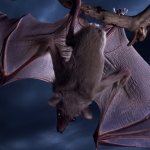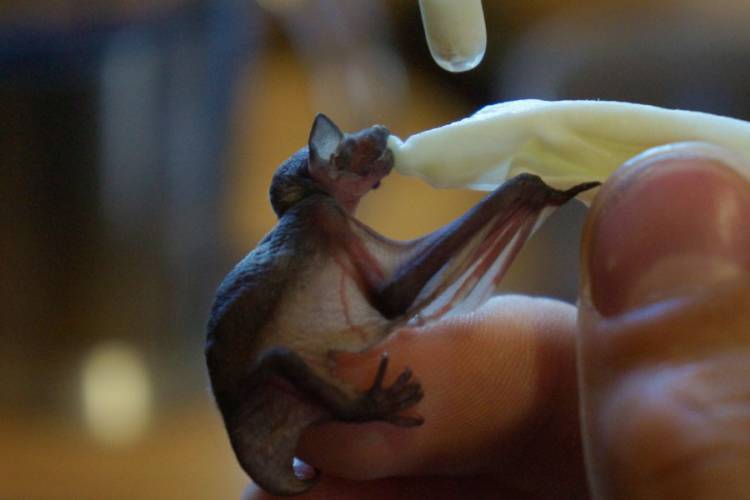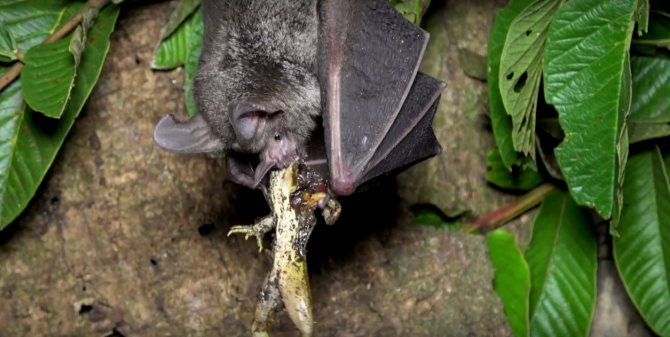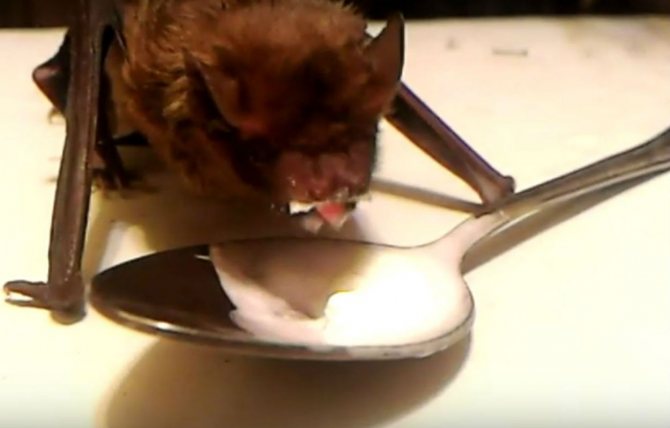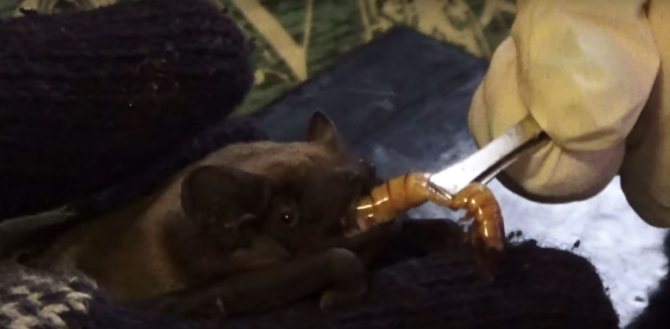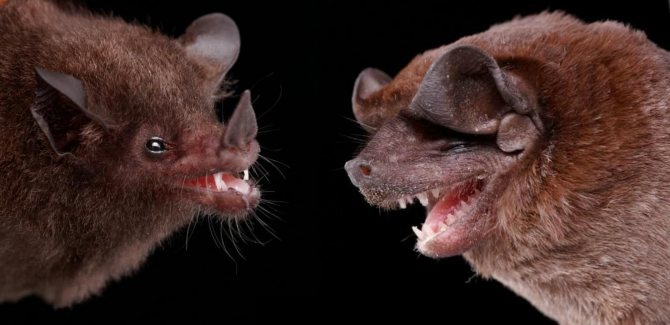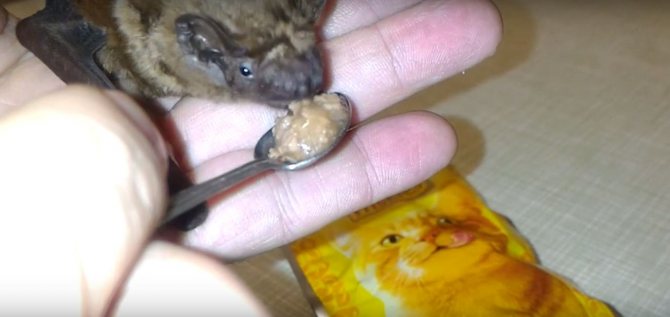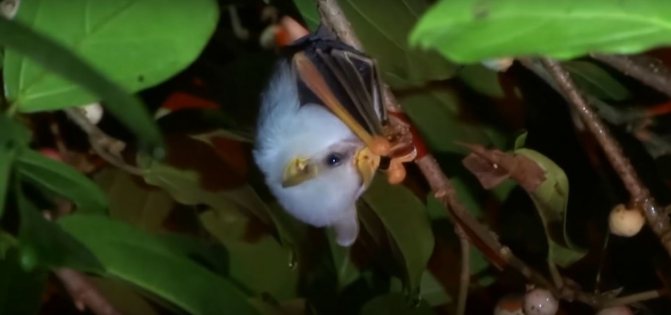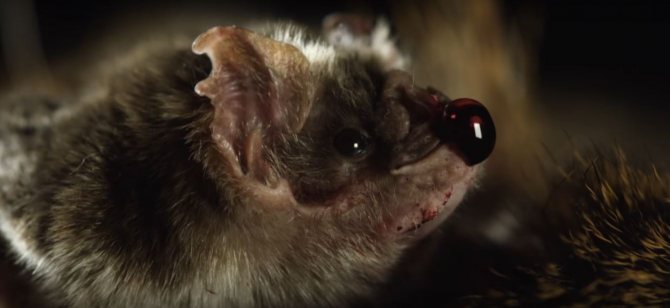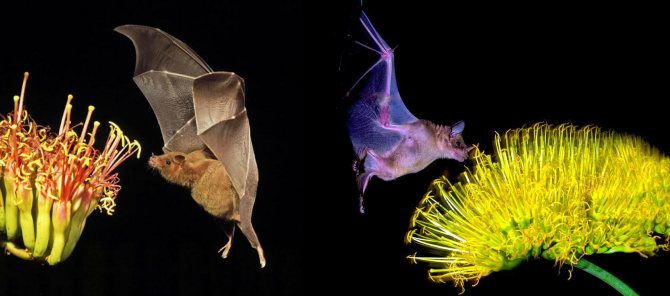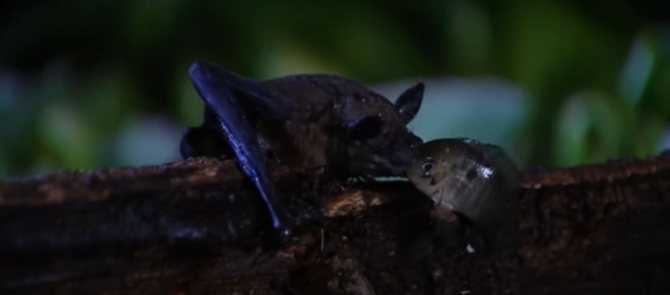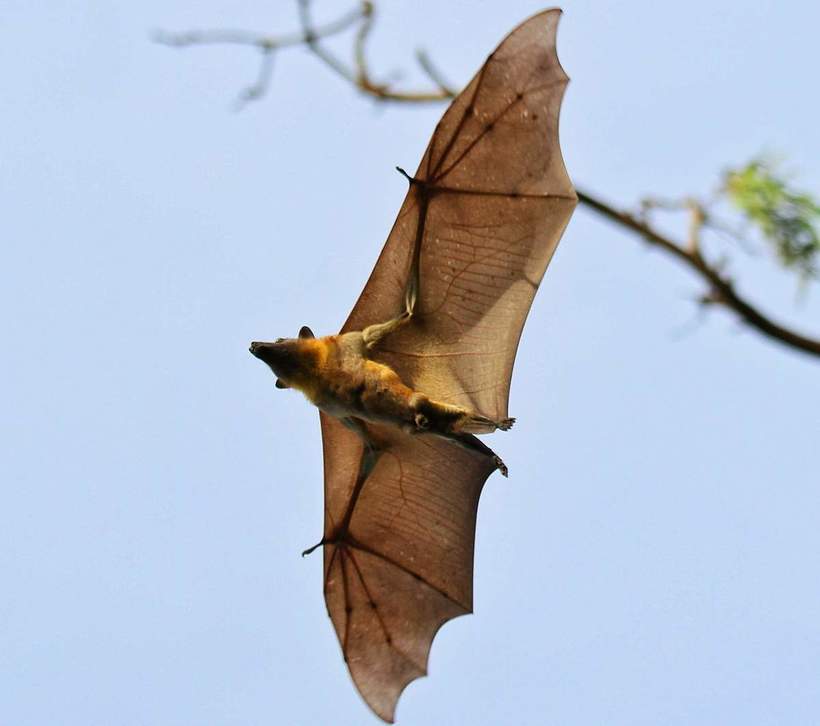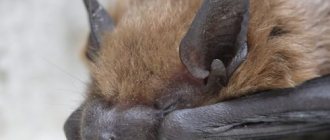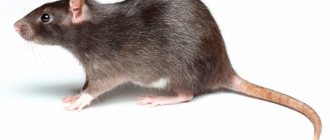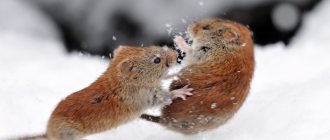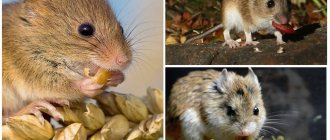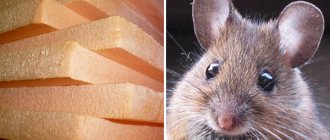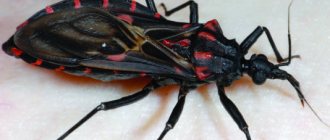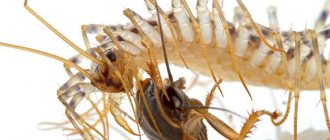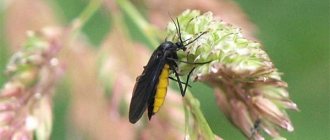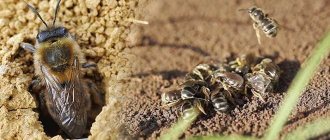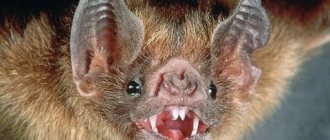A bat is a mammalian animal that belongs to placental mammals, the bats species are rightfully considered the most mysterious animal. On the one hand, the bat is the only mammal that can move through the air; on the basis of this ability, they claimed that it was a bird. But, on the other hand, they are viviparous, they feed their young with milk, which birds do not.
The nocturnal lifestyle of these animals and their frightening appearance has created many legends around them, and some are absolutely convinced that the little animals sleeping in secluded places upside down are real vampires who hunt people and animals to drink their blood. Not everything in these legends is fiction.
The origin of the name of the bat
The very name "bat" appeared in Russian only at the beginning of the 17th century, thanks to the translation of a German book. This literary version took root, and this is how the bats began to call the animals of the order.
In Russia, there were other names as well: bat, leather, nocturnal, bat, horseshoe bat, long-eared bat, arrow-eared, trubkonos and others. All reflect the external sign of these mammals or the peculiarities of their lifestyle.
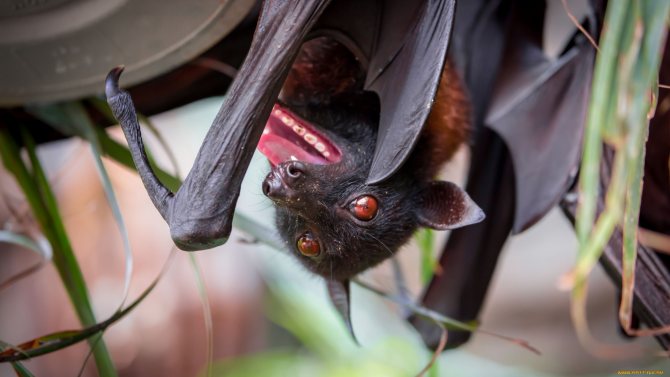
The same is observed in the modern name. Animals that have no kinship with the order of rodents very much resemble them in appearance. Yes, and the sound of a bat is similar to the squeak of rodents, and the ability to fly adds the definition that has become the name of the squad of bats.
Main characteristics
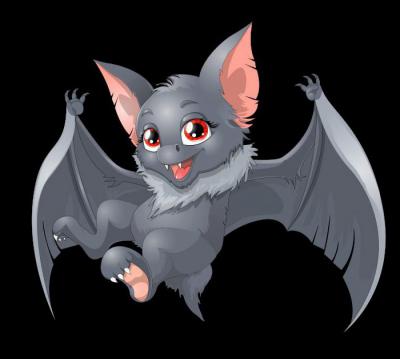

Who is a pet bat? This is a typical representative of the bats order. You can recognize him among other individuals by several distinctive features:
- Large, black eyes that can seem pretty cute at first glance.
- Small size.
- Fast and jerky movements while moving.
- Soft coat, the shade of which on the tummy is, as a rule, somewhat lighter than in other places.
- Very long limbs, while the bones look like a hook in appearance.
Another feature is the habitat in which the mouse is accustomed to exist. They feel most comfortable in small dark places. Usually these are caves.
What do bats look like?
It is believed that every fourth mammal on earth belongs to the order of bats. Despite the species differences, they all have common external features.
Wings
The main distinguishing feature of these animals is their wings. It was because of the presence that the disputes continued for a long time: a bat is still a bird or an animal.
The wings are thin membranes that stretch between the front and hind limbs. Unlike birds, bats do not have feathers, and membranes are attached to the very long toes of the forelimbs.
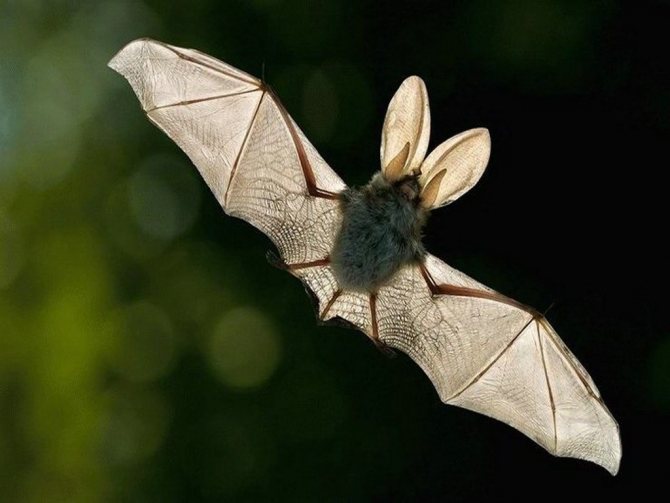

The wingspan, depending on the species, can vary from 16 cm to 1.5 m. Despite the apparent fragility, they are able to withstand significant loads and develop a flight speed of up to 20 km / h.
Flying is not the only purpose of the wings. During sleep, bats wrap themselves in them, and thus keep their warmth.
Bat skeleton
The body of the animals is relatively small: the spine is much shorter than the modified forelimbs with five fingers having sharp claws. The animal does not have strong limbs, the humerus bones are shortened, so its movement on the ground is minimal, the main thing for them is flight.
The skull is rounded with a shortened anterior part in some species and elongated in others. If you look at bats, the body is practically invisible. They seem to consist of a head and wings.
Animals have a tail that is not covered with hair. For most, it serves as a device for maneuvers during flight.
Ears
Ears play an important role in the life of an animal that does not have sharp eyes. In almost all species, they are of enormous size.
Numerous networks of blood vessels feed the ears, since their participation in the life of bats provides them with the ability to move and hunt.
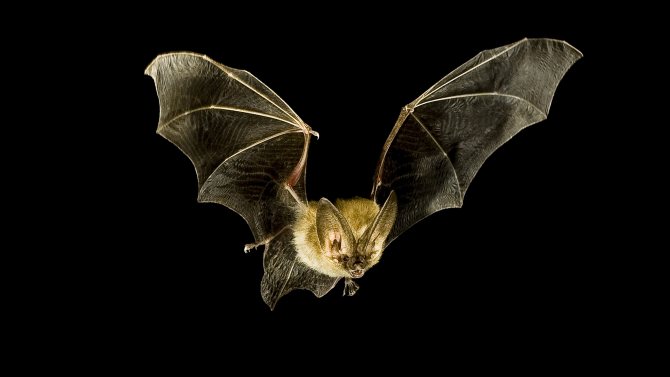

Animals make subtle sounds that, pushing off objects, return. This technique of orientation in the world is called echolocation. The ability to catch even the quietest sounds with lightning speed helps bats to fly at night, to hear the movement of potential prey.
Dysfunction of the hearing organs most often leads to the death of the animal.
Eyes
Bats are nocturnal, which in the process of evolution affected their vision. The small eyes in almost all species are located in the front of the muzzle.
The animals of this detachment see everything in black and white. Since the bat sleeps in shelters during the day, its eyes react very poorly to sunlight.
But for these animals there are exceptions. For example, the Californian leaf-bearer sometimes rely more on sight than on hearing during the hunt.
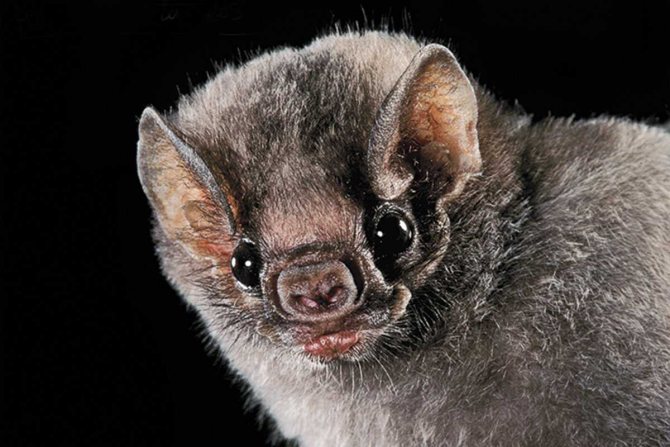

If a bat lives like a pet, then you have noticed that it rarely flies into a room in which the light is on, and to catch it, you just need to turn on the light bulb, and the animal immediately stops flying.
Teeth
Absolutely all bats have teeth: incisors, molars and premolars, and canines can be observed in the jaw. But their number, size and structure depends solely on what the bats eat in their natural environment.
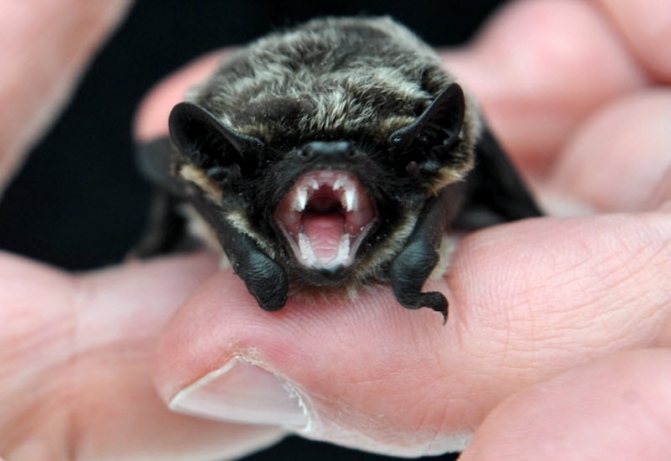

Those bats, whose food consists of insects, have up to 38 teeth, and the length of their canines can also be different. Blood-sucking mice usually have 20 teeth, and they are not as large and developed as their insectivorous counterparts.
The shape of the teeth is adapted to what bats eat in nature. So in insectivorous animals, teeth resemble mortars that grind rough food. But only those who feed on blood have long fangs.
Wool
Most species of bats have a dull color: brown, gray, dark gray. This is due to the need to remain unnoticed during the night hunting. But even among these animals there are real mods: in the species of Mexican fish-eating, the wool is bright orange or yellow. There are bats in shades of which there are light tones: fawn, light yellow.
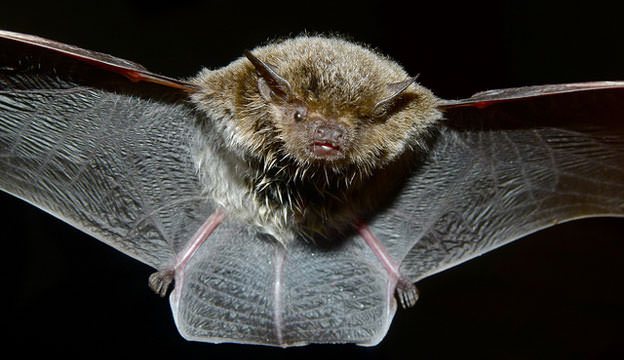

The Honduran white bat boasts a white coat and bright yellow ears and nose.
The quality of the coating can also vary. There are animals with thick and sparse fur, long and short hair.
Echolocation
In the pitch darkness of the caves, even the most sensitive retinas will not have enough light, so their inhabitants do not need sharp eyesight. The animals make their way in the night with the help of a sonar. This is an amazing result of evolution, which appears to have appeared relatively recently and continues to improve. The ancestors of bats had common faces. Modern leaf-noses, fold-lipped lips and the like "adorned" the head with outgrowths, very reminiscent of the bowls of receiving antennas.
A flying mouse makes frequent clicks at frequencies of 80-130 kHz and catches echoes from surrounding objects with huge sensitive ears. Periodically, the frequency drops to about 30-40 kHz, this "squeak" can be heard by people, especially children and musicians. At the moment of pursuit of prey, the sounds of the locator merge into a continuous squeal, and in a calm flight the animal regularly "ticks".
The bat's brain is large and convoluted. He has a lot of work to do: in flight, he needs to analyze multiple echoes and create a "3D model" of the surrounding area. Calculate the speed and direction of movement - your own and prey, the distance to obstacles, their size and so on. Vegetarian bats are not very good at echolocation, but they don't need it: fruits won't run away anywhere ...
Bat species (insectivorous and herbivorous)
The study of the life of bats is complicated by their secrecy, but scientists were able to establish that at the moment about 700 species of these animals have been recorded. We will tell you more about some of them.
Two-tone leather
The habitat of representatives of this species is almost all countries of Eurasia. You can also find it on the territory of Russia, from southern Siberia to the western borders. They live in mountain ranges, forests and steppes. Some animals of this species easily inhabit the attics of houses of large cities.
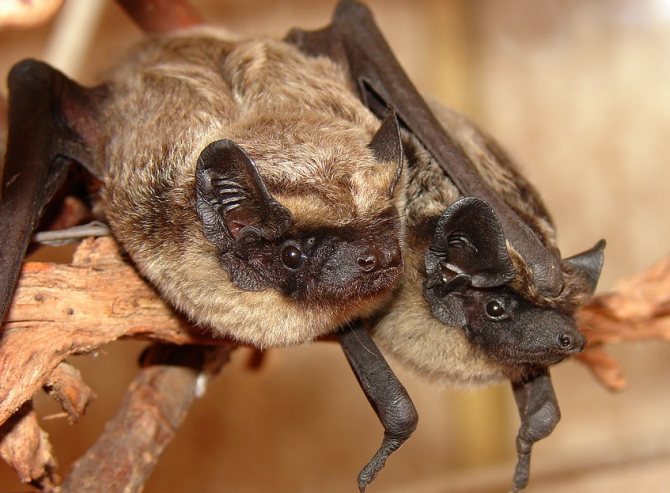

The body length of these bats is up to 6.5 cm, and the wingspan is 33 cm. At the same time, they weigh up to 23 grams. Such dimensions make it possible to say that the two-tone leather is a rather large bat.
The original color of the animal determined its name: ears, muzzle and wings are almost black in color, the back is dark brown, and the abdomen is light gray or white.
Two-tone leathers feed on nocturnal insects.
Giant nocturnal
These bats live in the European part. The giant nocturnal is the largest bat living in Russia. Its body length reaches 11 cm, its weight is 70-80 grams, and its wingspan is 45-50 cm.
The animal does not have a bright color: they are usually brown or reddish-brown, the abdomen is noticeably lighter than the back. But it is quite difficult not to notice the flight of these creatures, since their size is impressive.
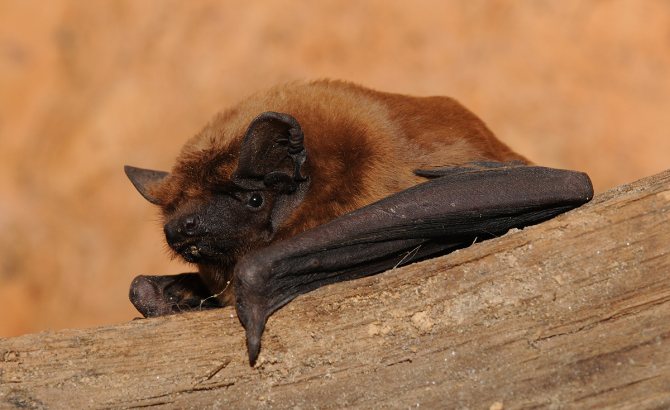

Observing the life of nocturnia, it was established that these bats eat large insects. In Russia, they prefer beetles and butterflies.
They settle most often in tree hollows. Since low temperatures are possible in their habitats, in the cold season, the animals migrate, choosing warmer regions.
White leaf-bearing
The white bat got its name for its original appearance: their coat is white with slight gray blotches on the abdomen. But the nose and ears of representatives of this species are bright yellow, and their shape resembles leaves. It seems that the animal has stuck autumn leaves on itself.
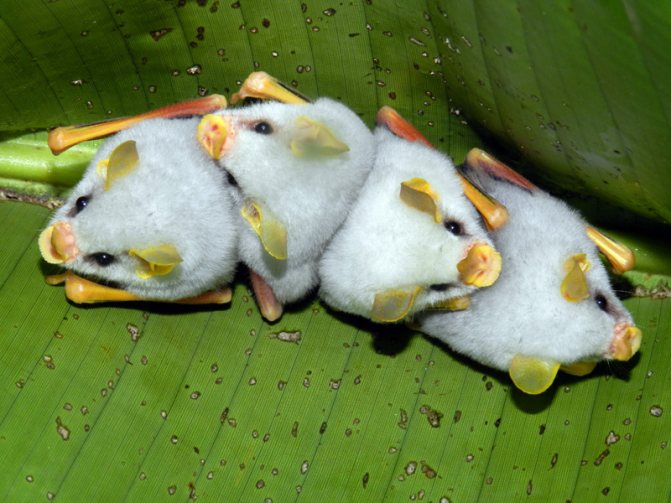

This is one of the smallest representatives of bats: the body size is no more than 4-5 cm, and the weight is only 7 grams. It is so small that sometimes it seems that it is a bird.
This white miracle lives in South and Central America, Honduras, Panama. For life, they choose evergreen forests, where they always find food for themselves - ficuses and fruits.
The original appearance of the animal attracts attention, so the bat at home is increasingly common.
Pig-nosed bat
Representatives of this species are rightfully considered the smallest: their weight does not exceed 2 grams, the body length is 3-5 cm. Sometimes they are confused with bumblebees.
They got their name for the original nose, reminiscent of a pig's piglet. The usual color is dark brown, sometimes grayish brown. The coat on the abdomen has a lighter shade.
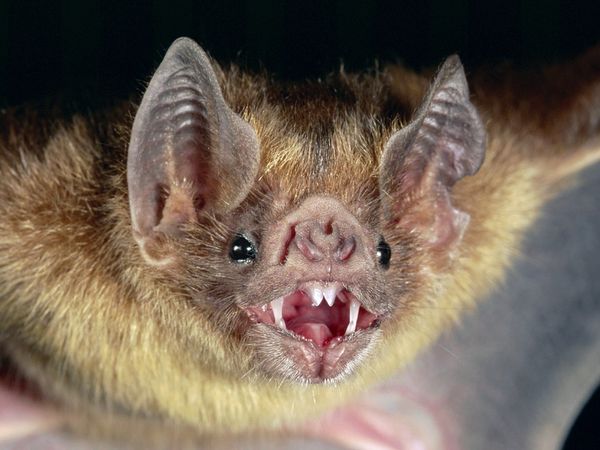

Pig-nosed bats live in the southwest of Thailand and on some nearby islands. In other places, they are not common, therefore they are rightfully considered endemic to this area.
A feature of these animals is their joint hunting: they usually gather in small flocks and fly out together in search of small insects.
Small bats are difficult to see with the naked eye, so it is very difficult to observe their life.
The limited habitat made the population of these animals extremely small. Currently, this species is listed in the Red Book.
Great harelip
These animals live in areas from southern Mexico to northern Argentina, as well as the Bahamas and Antilles.
The large harelip is a large bat: its weight sometimes reaches 80 grams, the body size is up to 13.5 cm.
The animals have an interesting color feature: the males are bright red, sometimes even fiery red, but the females are very faded, grayish brown.
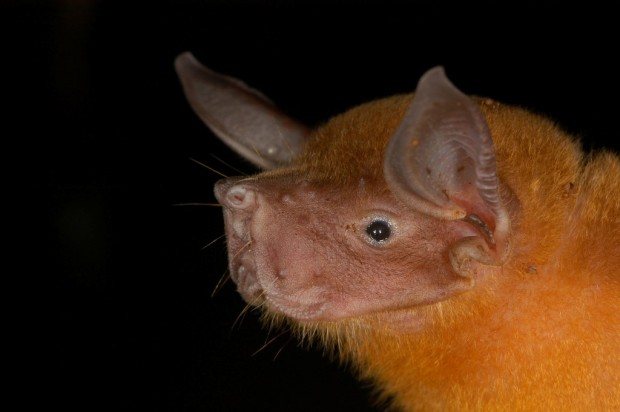

These bats got their second name - the fish-eating bat - because of their eating habits. The animals prefer to live near water bodies. Scientists have found that the hare lip eats not only insects, like many bats, but also small fish, small crayfish and frogs.
By the way, they can fly out to hunt, unlike many representatives of their squad, during the day.
Water bat
The life of representatives of this species was described in detail by the French scientist Dobanton. It was in honor of him that these animals received their second name - Dobanton's bat.
Relatively small animals (weight up to 15 grams, wingspan - no more than 27 cm, and body length - 5.5 cm) prefer to hunt near water bodies, preferring mosquitoes and other blood-sucking insects for food.
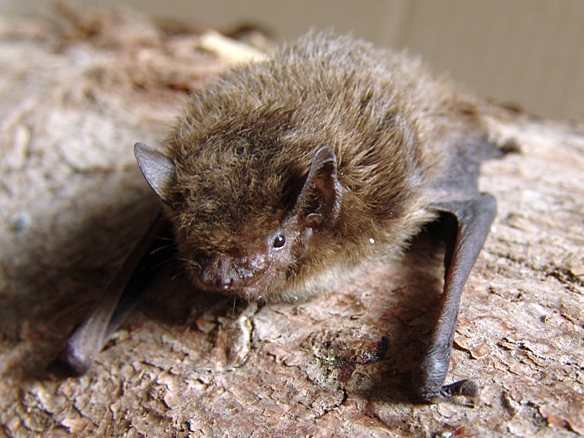

Small bats have a fairly wide habitat: in Russia they can be found in the lower reaches of the Volga, in the Ussuri region, on Sakhalin, Kamchatka, in the Primorsky region; they also live in other countries: in Kazakhstan, Ukraine, Mongolia, Italy.
Nondescript in appearance (usually their fur is dark brown), they are excellent hunters, destroying whole hordes of insects.
The decline in the water bat population is contributing to the spread of insect-borne diseases in livestock.
Brown long-eared bat
The most notable part of these bats are their huge ears. Weighing no more than 12 grams and a body size of 5 cm, the ears are sometimes larger than the body. But they cannot boast of the original color: their gray-brown fur is very inconspicuous.
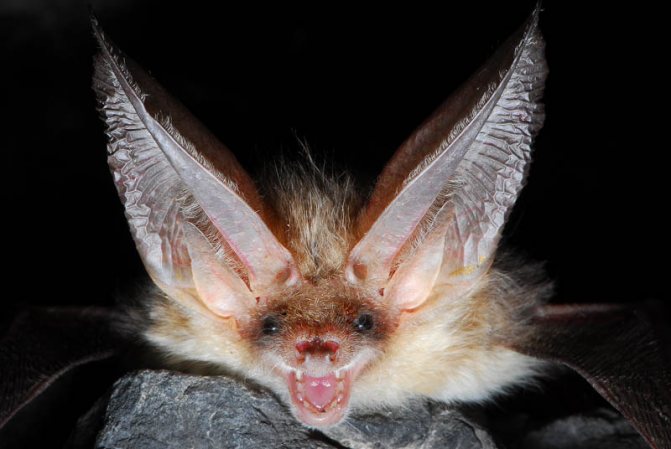

The long-eared bat are found in almost all countries of Eurasia, in northern Africa, in China.
For their homes, they adapt almost any place: caves, buildings, trees. Most often, they fly away to winter in warmer regions, but they always return to their old homes.
Huge ears allow her to hunt even in complete darkness.
Dwarf bat
It is rightfully considered the smallest representative of the order of bats living in Europe. Its body is up to 4 cm long and weighs 6 g. Representatives of this species have a rather long tail - up to 3.5 cm.
The color of the animal depends on the region of habitation: in animals living in Asia, it is pale, grayish; the European ones are brown.
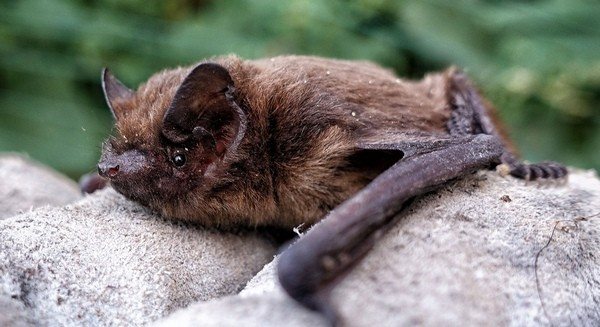

Bats settle near human habitation, often choose attics of houses and sheds.
Representatives of this species prefer small insects for food, which is very helpful, exterminating thousands of mosquitoes and midges.
Classification and dimensions
The appearance of these animals has long confused scientists. In the rather enlightened 18th century, "scientific" works worthy of the dense Middle Ages were written about bats. Without exception, the habits of bloodsuckers were attributed to all bats, although out of more than 700 species, only three belong to real vampires (they will be discussed below). Even the peaceful bats, whose menu consists only of fruits, got it.
Modern taxonomy classifies the order of Bats as a suborder of Bats, the class of Mammals (Beasts). These are the only representatives of mammals to whom the sky has conquered. True, the night sky ... by day the air belongs to the stronger flyers. Birds! It was they who, in the course of evolution, drove the mice "into the twilight."
All the variety of species of bats is divided into 16 families: Horseshoe-nosed, Slit-nosed, Bulldog, Funk-eared, Pig-nosed, Suck-legged, Hare-nosed, Leaf-nosed and others, with no less expressive names. They are all united by two common features:
- leathery membrane as wings;
- resting posture - suspended upside down.
Bats spend the daylight hours in caves, attics and other secluded places, clinging to the ceiling with their paws. Sleeping, they look more like dry fruits than animals.
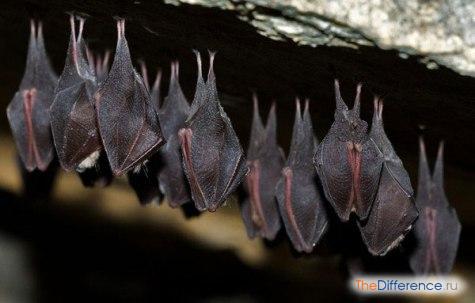

This is how bats rest
The maximum wingspan - 1.5 m - is possessed by close relatives of bats, fruit bats, or flying foxes. Giants are vegetarians, and they need sharp teeth to gnaw at the tough peel of tropical fruits. The smallest bat is the Philippine bamboo. The baby weighs about 2 grams, and its body length is 3 cm with a wingspan of 15 cm.
Bat species (blood-sucking)
Observing the representatives of the order of bats, we found out that in the wild the bat eats not only insects and plants. Among these animals, there are also those that feed on blood.
Common vampire
A very numerous species has spread the opinion of bats as vampires, capable of drinking all the blood of an animal or a person. Another name is great bloodsucker. The enzyme contained in the saliva of these animals can be quite dangerous: it affects blood clotting. Even a minor wound can cause major blood loss. And if several dozen bloodsuckers attack during the night, then death is inevitable.
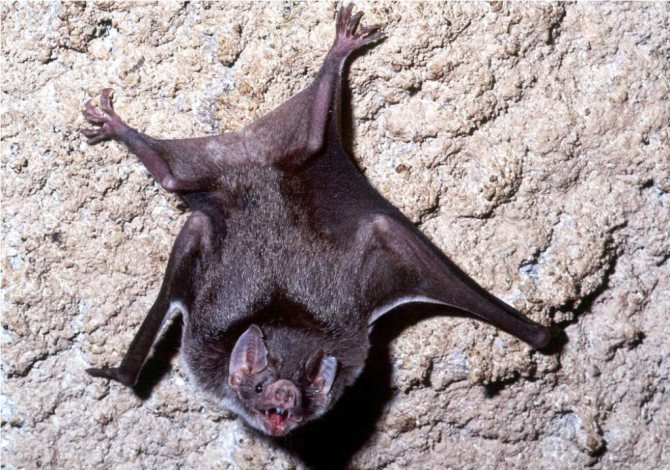

This is not a very large bat (weighs no more than 50 grams, and a wingspan of up to 20 cm) spends the whole day sleeping upside down in its shelter in a large company of fellows, and flies out to hunt at nightfall. She chooses her victim among sleeping animals, she especially prefers large livestock - they cannot resist. Choosing a place on the body near the vessels, the animal bites and licks off the blood, which easily flows out of the wound.
A person can also be attacked by ordinary vampires if he spends the night in places accessible for visiting these bats.
The habitat of this species is South and Central America.
White-winged vampire
The representative of this species has average sizes for bats: the length of the body is up to 11 cm, the weight is up to 40 grams, and the wingspan is up to 40 cm.
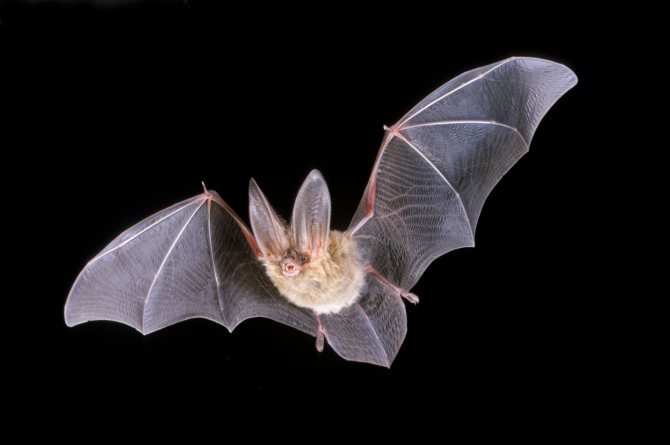

Like the common vampire, the white-winged one lives in South and Central America. Its coat has a reddish-brown tint, somewhat light on the abdomen.
The white-winged vampire attacks birds, it is their blood that is the animal's diet.
Fur legged vampire
It lives in the same places as its blood-eating cousins. But representatives of this species can safely attack both birds and animals.
Unlike other bats, the fur-legged vampire does not have a well-developed hearing, therefore, in its flights, it relies not so much on the usual echolocation as on sight.
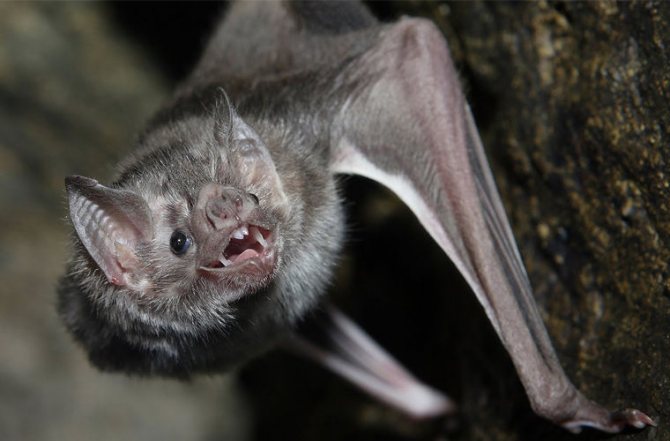

Their grayish-brown color and small size allow them to approach their prey unnoticed.
Many researchers have noted that fur-legged vampires are absolutely not afraid of people: they can fly very close, practically sit on their hands.
Bats are very often frightened, calling them blood-sucking and dangerous, but of the whole variety of species, only three really drink blood.
Food
A baby bat is born blind, naked and helpless. The only thing he can do is suck milk and cling to his mother's fur with his claws. The first days she wears it on herself, like a monkey. By the way, genetically bats are much closer to primates than to rodents. A five-day-old mouse can already be left alone while the mother gets food.
Large colonies of animals have developed a system of collective feeding - each female feeds her own, and sometimes also a neighbor's cub. Since insects are very nutritious, the mother has enough milk. The mice grow rapidly and by the age of one and a half months they set off on an independent life. Bats live from 10 to 20 years, depending on the species.
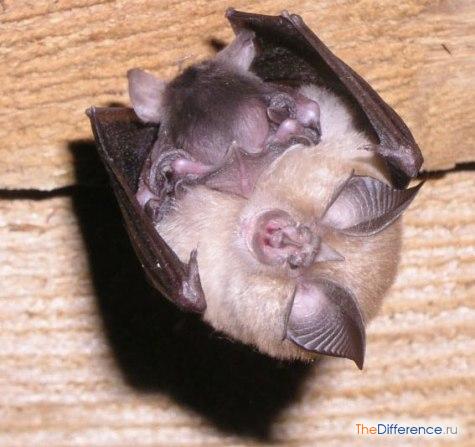

Bat with mouse
Temperate bats feed on insects. They hunt mainly in flight, while the membranes act as a seine, raking up those living creatures that did not fall into the wide-open mouth. One mouse, breaking into a flock of midges, catches 15 midges per minute. In an hour, more than 600 mosquitoes disappear in her womb, and the hunt lasts all night long. Once you imagine this, the desire to offend a useful animal immediately disappears.
In the Far East, where terrestrial invertebrates are found in abundance, mice have switched to the "bell-style" hunting method. They crawl nimbly on the ground and collect whatever they come across: beetles, caterpillars, spiders and centipedes, even small frogs.
Tropical bats are very diverse in appearance, and their diet is different. As a rule, animals of small species eat invertebrates, and large ones prefer vegetable or mixed food. On the menu of false vampires, there are both fruits and insects, and when the opportunity arises, they drink the blood of large animals. There are sweet-tooth mice that prefer night-colored nectar.
The Mexican fish-eating mouse by the nature of the waves determines exactly where the fish came close to the surface; the size of the potential prey is also important - a large fish will drag the hunter grabbing into it under the water ... The mouse eats the caught fish or hides it in the cheek pouch to carry it to the mice.


There are mice - "experts" in frogs. They live in those regions where there are more poisonous amphibians than edible ones. The error can be fatal, and the hunter circles over the "game" until he is convinced by his voice and smell that the frog is not dangerous. The giant nocturnal, inhabiting the Ukraine and the Caucasus, catches lizards and rodents, ruins the nests of small birds.
About vampires
“Monstrous bats attacked the Spaniards who were in the New World. At night, they gnawed people to such an extent that they emanated blood and in the morning they were found dead in their beds. Seeing a chicken, the mouse digs into its comb and sucks out all the blood without a trace ... ". This is not a horror movie script. Such ideas about vampire mice existed until the beginning of the 20th century, and even now they are sometimes found.
The largest of these "monsters" does not exceed 9 cm in length. Desmodus rufus, aka an ordinary vampire, is a fragile and physically weak creature. His weapons are silence, razor-sharp incisors and saliva with anesthetic secretions. Having sneaked up to the sleeping animal, the vampire cuts off a piece of skin over the place where a blood vessel passes close by.
And licks the trickle with her long tongue. In one sitting, Desmod can drink a tablespoon of blood, more than his tiny stomach is not able to accommodate. The wound swells and bleeds longer than usual, but does not pose a threat to life. The danger of a bloodsucker is different - it spreads infectious diseases, including rabies and Ebola.
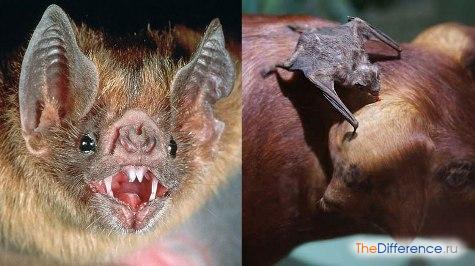

It looks like an ordinary vampire
But people even adapted vampires to their advantage - they make a drug for the treatment of stroke from their saliva. There have been no cases of attacks by Desmods on humans over the past 100 years.
Where do bats live?
If we talk about the territories where bats live, then we must list the entire planet. The only exceptions are areas of tundra and ice-covered land. In these natural conditions, the life of bats is impossible. These animals do not exist on some remote islands, since they simply could not get there.
The bat is a rare mammal that can exist in almost any place where there is at least some opportunity for shelter during the daytime.
In all other parts of the world, you can meet representatives of this detachment. Even in large cities, in the attics of high-rise buildings, bats find shelter for themselves.
In nature, the bat prefers to settle in caves, where, clinging to the ledges, they sleep in the daytime, and with the onset of dusk they fly out to hunt. There are caves in which thousands of bats colonies live. Sometimes the height of the layer of excrement in them reaches a meter, which indicates the number of animals and the duration of stay in this place.
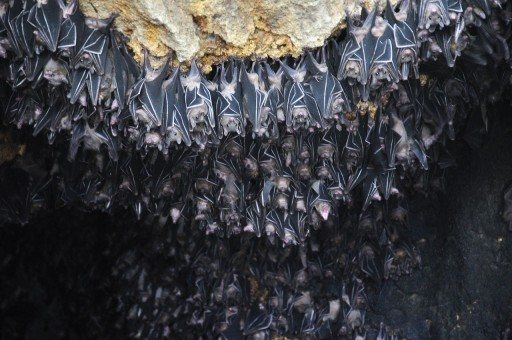

Where there is no natural shelter, these animals are placed in trees, hiding between branches. Sometimes they occupy abandoned tree hollows, they can build themselves shelters from large leaves, gnaw through bamboo trunks, and even settle between the fruits of plants. The main requirements for their house, where the bat sleeps all day, is safety and no direct sunlight.
These animals are not at all afraid of people, therefore they are calmly placed in the attics of houses, sheds, in premises for livestock.
Sometimes people, not knowing what bats eat in nature, believe that they can be dangerous to humans and pets. Therefore, having found these animals in their attic or in the shed, they try to exterminate them. Most bats eat insects, so they are absolutely safe.
Ways to drive away the animals
Regardless of whether you are faced with a single uninvited guest or are trying to win your own attic from bats, do not forget that these animals can be included in the Red Book. Therefore, there is no place for chemical or folk poisons. You must create such conditions that the "guests" flew out of the apartment on their own.
Random guest
When you meet a flying animal in your room, do not panic. The casual guest is very confused herself. Once in an unfamiliar environment, she will try to find a way out. And you need to help her a little. To drive a bat out of your house, follow three steps.
- Empty the room. Get children and pets out of the room.
- Open the window. Turn on a bright light in the room, draw back the curtains and open the windows wide.
- Exit the room. Close the door behind you, in five to ten minutes you can safely return. The bat will fly out during this time.
Don't try to kick the bat out by swinging the towel. This action can injure the animal. In addition, the movements can make the guest angry, and she will attack you.
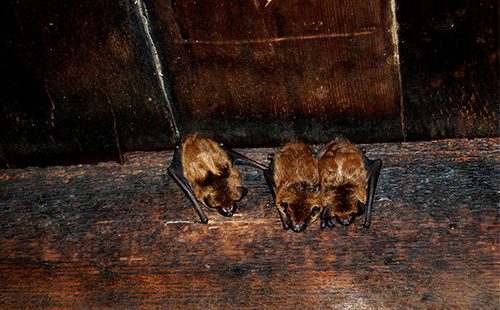

Fight against mass invasion
If you are dealing not with one individual, but with a whole colony, then you need to act differently. Only the “tenants” should be evicted closer to autumn, when the females will feed all the young. If you drive out mice in the summer, you will condemn the kids to painful death, and turn your balcony or attic into a real breeding ground for infection. Therefore, accept the rustle and squeaks at night. In the fall, start fighting in four steps.
- Surveillance. At night, carefully observe through which cracks and loopholes the bats get out.
- Checking. When the whole flock leaves the dwelling, once again carefully inspect the room so that not a single animal remains in it.
- Repairs. Now carefully seal all holes, cracks, loopholes, using fiberglass, metal grates, sealants.
- Cleaning. Complete the procedure with a general cleaning of the premises using whiteness, "Domestos".
Don't forget about the dangers of excrement. Carry out the expulsion procedure in overalls, a respirator, be sure to put on tight gloves on your hands.
Repeller
If the exile procedure did not end in victory, pay attention to the numerous methods that can scare away intruders. They allow you to permanently get rid of bats, but at the same time do not harm endangered animals. Four drugs are most effective.
- Naphthalene. You can drive out mice with mothballs. Place the substance in bags, hang in different places.The specific smell will completely repel the animals. It is necessary to change the naphthalene periodically. It works as long as it continues to exude an odor. Despite its high efficiency, the method can only be used in non-residential premises. Vapors of mothballs are dangerous to humans and pets.
- Water. Shower can be an easy way to get rid of mice. Aim the hose at surfaces that attract guests and douse them with cold water. This will get rid of the bats, but unfortunately not forever. The animals will calmly return to their places as soon as you dry out the garage or shed.
- Aerosol 876 4-Pack Bat Repellent. If you prefer to fight with industrial means, then pay attention to this drug. It contains peppermint oil. When working with a spray, special care must be taken so that, together with scaring away mice, do not provoke intoxication in yourself or your pets.
- Ultrasonic repeller. This is another method for driving bats out without harming them. Such devices emit special signals that a person cannot hear. But this sound is perfectly picked up by the "guests". They cannot put up with such discomfort, so they quickly leave your walls.
There are other, less effective ways. For example, a smoker. But be prepared to smoke for at least three to four days. Are afraid of mice of light and fan. But this procedure is unlikely to please you. The rumble of the fan and the bright spotlight are not conducive to good sleep at all. And the amount charged for electricity consumption is unlikely to please anyone.
A source
Bats lifestyle
Bats most often live in colonies, in which there can be several tens of thousands of individuals. Some species huddle together during the day's rest, while others prefer to hang upside down in splendid isolation.
A record number of individuals in one colony was counted in Brazil. In one place, there was a refuge for 20 million individuals.
Cohabitation does not make these animals gregarious, since they do not perform any joint actions: they hunt exclusively alone.
Bats and families do not form. Uniting only at the moment of mating, they immediately forget about each other.
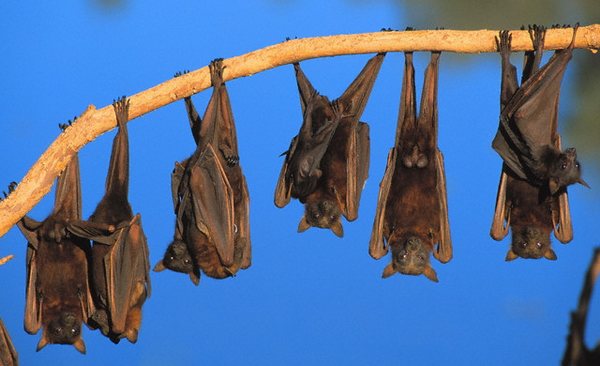

In regions where there are cold seasons, animals can hibernate, which lasts up to 8 months. At this time, bats wrap themselves in their wings, attach upside down in some secluded place and sleep without feeding.
Some species are capable of seasonal migrations. With the onset of cold weather, they fly to warmer regions. Sometimes during this period bats cover distances of up to 1000 kilometers.
If natural conditions permit, animals remain active all year round.
How long do bats live?
An interesting question remains: how many years do bats live in nature. Average life expectancy is 5 years. How long bats live depends on the species. Among these animals, there are also centenarians, whose age can reach 20 years.
The oldest bats record holder is 33 years old.
A bat at home usually lives less than the time allotted to it by nature, since it does not have the opportunity to be fully active.
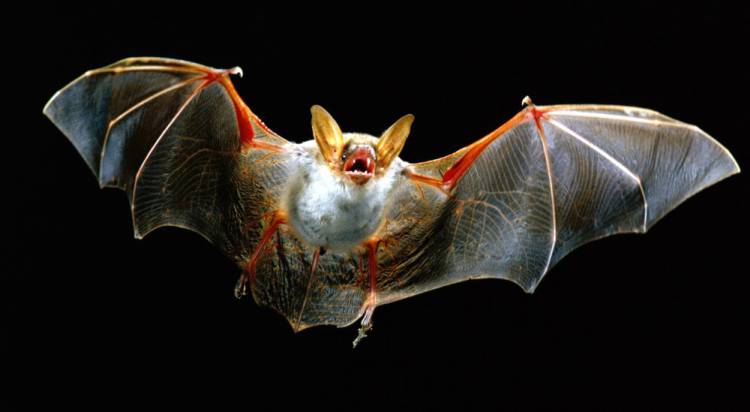

Folk omens associated with "bloodsuckers"
Bats have always been associated with otherworldly forces, so many signs and superstitions are associated with animals.
- To the trouble. The appearance of a bat in the house is associated with upcoming unpleasant events. It can be the death or serious illness of someone in the household.
- Poverty. An animal that has flown in can signal impending material losses, lack of money, loss of any value.
- Family well-being. It is believed that a bat will never fly into a house that is devoid of good energy.Therefore, seeing an uninvited guest in your apartment, you can be sure that this is where peace, harmony and harmony reign.
- Fortunately. In Europe, they believe that the bat does not bring evil, but, on the contrary, protects against it. In the Middle Ages, it was from the bones of bats that protective amulets and talismans were made. Therefore, many peoples are sure that a visiting mouse will take trouble and misfortune away from home.
- Towards longevity. In China, they say that a guest who has flown in brings happiness, wealth and longevity.
Even if the thought of possible troubles does not leave your head, do not kill the uninvited guest. Gently help her out of the house, remembering to protect her hands and body from a possible bite. While you are escorting the "visitor" out, read the prayer. Healers assure that such simple actions will completely protect against trouble.
How do bats breed?
Reproduction of bats has its own characteristics. Some species that live in warm climatic zones give birth to cubs twice a year. The mating period for them does not matter. The secretive lifestyle of bats does not allow us to accurately imagine how the process of courtship between a male and a female is going on.
Males of some species make a variety of sounds before mating. Perhaps with this song they attract the female or tell her about their intentions.
Those animals that live in temperate latitudes give birth to offspring only once. Mating usually takes place in the fall, until the moment when the animals go into hibernation. But the spermatozoa that have entered the female's body do not immediately fertilize the egg, but may be in a certain reservation until the moment of awakening.
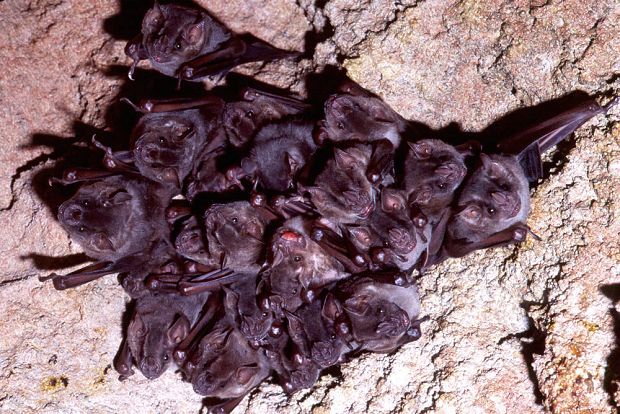

After hibernation, pregnancy begins, the duration of which depends both on the species and on the ambient temperature: at low temperatures, the baby develops longer.
Usually females give birth to one cub, less often two or three. During childbirth, the mouse turns its head up. The cub is born with its feet forward, which is extremely rare in mammals, and immediately enters the tail pouch, where it spends a week. After the babies, they hide in shelters and feed them with milk. It was this ability of bats that resolved the dispute whether a bat is a mammal or not, in favor of classifying them as mammals.
In the first week, the female takes her cub with her on a night hunt. He holds his mother tightly during the flight. But after a while, she is forced to leave him in shelter, since the baby becomes heavy, and it is impossible to fly with him for a long time.
The unique sense of smell allows these animals to find their young after night flights. They smell a baby at a distance of several kilometers.
For a week, and sometimes two, the babies remain completely helpless, and only after a month they begin to hunt on their own near their shelter, not moving far from it.
What does a bat eat and how does it hunt in the wild?
Almost all bats fly out to hunt at dusk or after sunset. The thing is that their vision is much worse developed than hearing. Most bats feed on flying insects. They hear their movements and pick up prey on the fly or find among the foliage.
There are animals that feast exclusively on the nectar of flowers and the fruits of fruit trees.
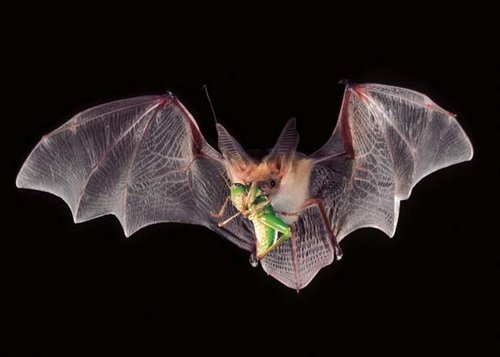

Some large species also eat earthworms, as well as large insects.
Among bats there is a bat, which feeds on frogs and small fish, except for insects. The animals fly above the surface of the water and, by splashing, determine where the potential prey is.
But there are only three species of bloodsucking, and they live in South and Central America. They fly out to hunt at night, find animals, bite and lick the blood.
Enemies of bats
Bats do not have very many enemies in nature, although the animals are very small in size.This is most likely due to the fact that the nocturnal lifestyle does not give them the opportunity to intersect in nature with many animals that are active during the day. They camouflage their shelters well or live in large colonies, where many animals and birds can be scared enough to penetrate.
Those bats that fly out to hunt at twilight time (for example, nocturnia) more often become prey for daytime birds of prey (hawks, hobbyists, peregrine falcons) who happily feed on these bats.
But nocturnal birds of prey (owls and owls) quite often attack bats, although it is very difficult to hunt them: advanced echolocation allows you to notice danger and dodge deadly claws and beaks.
Scientists from one of the American institutes noticed an interesting fact: the bats living in the caves of one of the mountain ranges of Hungary are attacked by the titmouse. Brave birds fly into caves, grab a sleeping animal and carry it to their nest. Birds rarely fly up to colonies, since the number of bats can be mortal for them.
In those latitudes where many tree snakes live, the bats hiding in the branches have a hard time. During the day, the animals, as a rule, sleep in shelters and are far from always able to react to an approaching creeping enemy. And they practically cannot fly in sunlight, so they become victims of those snakes who can eat small bats.
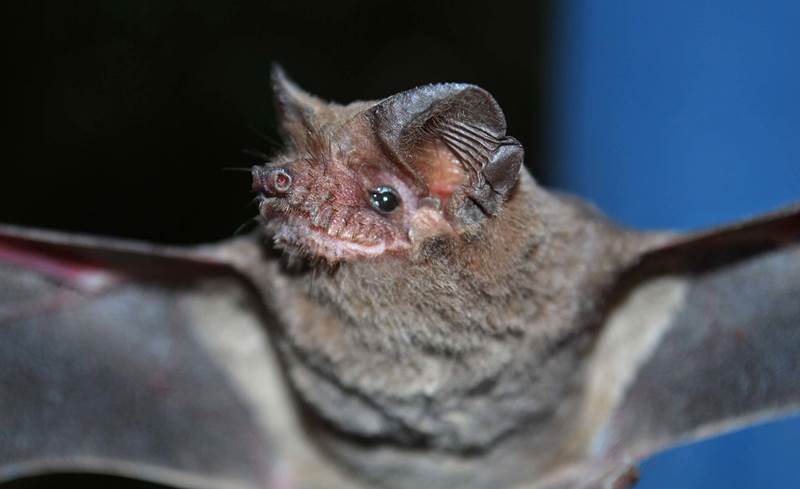

Bats, especially small individuals and species, often fall into the paws of spiders. They cannot see the stretched web in the dark; in this case, echolocation does not always help either. But bats get to hear an insect beating in a web. Sometimes large spiders who feed on small animals do not specifically kill the prey-insect in order to catch a larger one on it - a bat.
Sometimes bats become food for larger predators - weasels, ferrets and martens, which sneak up on sleeping animals and kill them.
But the main enemy is man. Sometimes people destroy entire colonies of bats just because they mistakenly consider them to be dangerous. Although the animals do a lot of benefits, destroying the insects that carry the infection.
It happens that a person does not have as his goal to kill bats. Some fertilizers or pesticides are detrimental to flying animals.
It seems incredible that people eat bats as well. In many Asian countries, the meat of these animals is considered a delicacy.
The danger of being "next door" to a person
Bats are difficult to categorize as pests. They feed on insects and live in hard-to-reach places. Flyers have practically no contact with humans, but at the same time they bring significant benefits. By destroying insects, they protect crops from the attack of pests. And by eating midges, mosquitoes, they protect people from unpleasant and painful bites.
But if these valuable "helpers" settle in the neighborhood of the apartment, they can seriously disturb not only peace, but also cause significant harm.
Human activity has led to a rapid decline in the bat population. Therefore, many species were listed in the Red Book and are protected by law.
What are the benefits of bats
In nature, bats do more good than harm. There are only a few blood-sucking species, so it is impossible to say that it is bats that carry diseases.
But they destroy insects, which, flying from one animal to another, are able to spread infections. During the season, the animals eat a huge number of mosquitoes, beetles and butterflies, many of which, for example, in tropical countries, do indeed carry fatal diseases.
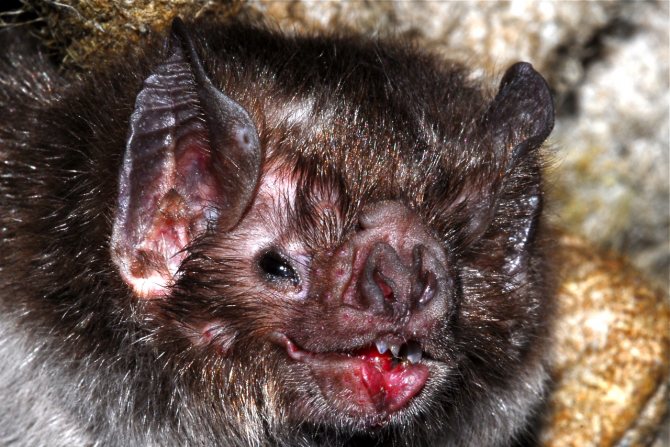

Protect bat gardens and agricultural land from pests that can ruin crops or harm trees and shrubs.
By flying from plant to plant, they help pollinate them.
Bats droppings are an excellent fertilizer. In some caves where animal colonies live, up to a meter of excrement can accumulate.
Bats saliva enzymes are used in medicine.
Where can I get it?
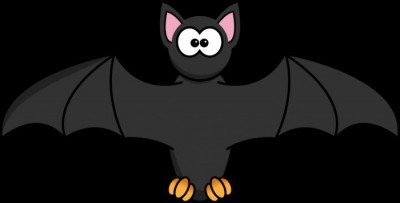

Many people see an animal with incredibly cute eyes in the picture and wonder where to get the same animal. The easiest way is to go out into the forest and fish it out. In some localities, mice fly into the house themselves, and its owner carefully accepts the guest and leaves him to live. Another option is to buy it from an exotic pet store.
Domestic bat
Recently, people have increasingly taken as pets not only dogs and cats, but also some exotic animals, among which there is also a bat. At home, these animals take root, but they do not feel as comfortable as in natural conditions. If you still want to keep a bat at home, then try to provide it with a life as close to nature as possible.
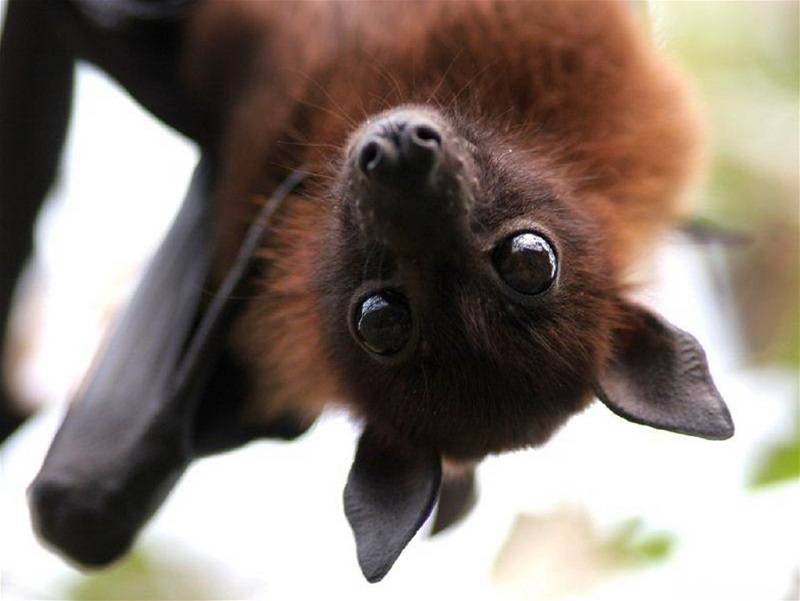

First of all, keep in mind that bats are exclusively nocturnal. If you plan to watch her during the day, then you will have to admire the sleeping animal. But at night, your pet will want to fly, which can cause a lot of inconvenience.
Comments (1)
Bats live in warm areas. It is important for them that the daytime temperature is high in summer, and winter is mild and short.
The main nutrition in the natural environment is:
- beetles;
- larvae;
- worms;
- cockroaches;
- other small insects.
Some large individuals are capable of eating small rodents and birds.
If you find a bat freezing or weakened in winter, then saving the animal will certainly be a good deed. However, remember that these mammals are the carriers of rabies. First of all, show the animal to the veterinarian.
At home, place the bats in a cage, this is necessary to avoid panic and injury to the animal. In the early days, give them milk mixed with yolk. Then, if you decide to keep an exotic pet with you, you will have to provide it with live natural food.
Suitable food in captivity:
- meal worms;
- cockroaches;
- adult beetles and their larvae;
- maggots;
- zoophobus (zoofobus);
- small pieces of lean cooked meat.
If you don't want to grow live food yourself, then you can easily find it in fishing stores. You can also give baby meat puree and quality cat food.
Be sure to keep several drinking bowls with clean water in the aviary. This is important not only for drinking, but also for creating sufficient moisture levels.
Pet house
Despite its small size, a bat at home needs a very spacious enclosure where the pet will be able to fly. It is necessary to equip the house with branches, shelters, so that the animal has the opportunity to hide during the day's rest.
The vital functions of bats directly depend on the ambient temperature, therefore, the room where the pet lives should be approximately 30 degrees, which is enough for a comfortable stay of a person.
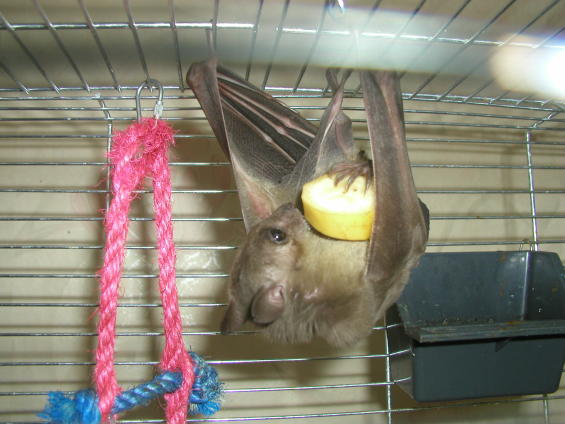

A bird cage is not always suitable for keeping bats, since the distance between the twigs is sufficient so that one fine night you could find that the animal flies over your heads and is happy to feast on insects.
How to feed your bat at home?
In their natural environment, most bats prefer insects, which they perfectly catch for themselves, making night flights. By the way, they should be fed at home in the evening, once a day.
A bat at home does not have the opportunity to feed itself on its own, so the pet's diet should be as close to natural as possible. But this does not mean at all that the owners of unusual pets should catch mosquitoes all evenings and bring them to their pet in the bank. What should be fed to a small bat if it lives at home?
The following diet is suitable for bats:
- meal worms;
- pupae of insects;
- adult beetles;
- raw egg yolk;
- natural honey;
- milk formulas for feeding children up to a month.
Feeding your pet is not so easy: you can add raw yolk, a little honey and vitamin E to milk mixtures. Take the animal in your hands and offer the mixture through a pipette. Storing leftover mixture in the refrigerator is not recommended.
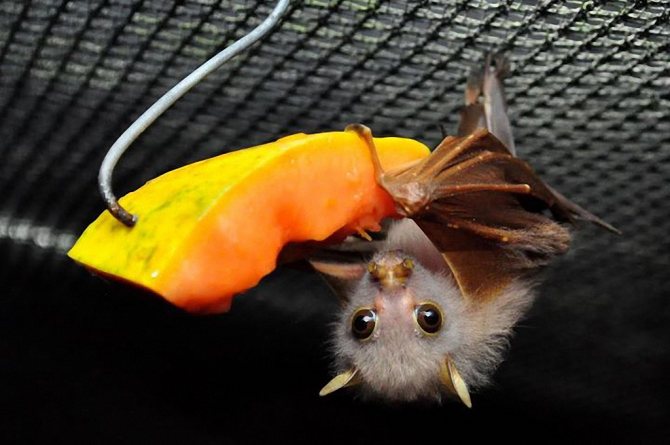

Insects suitable for food are usually stored in jars, but for a short time. A tame bat will gladly accept food, but it is not very easy to teach it to eat from your hands. It is possible that at first she will refuse food.
Knowing what voracious bats actually eat at home, remember that animals can eat up to half of their weight at a time, which, with little activity, can be dangerous to their health. Don't overfeed them.
Behavior
A person who has decided to become the owner of such an animal will undoubtedly be surprised by his behavior. Almost the whole day the mouse will sleep, choosing a secluded place for this, it is unlikely that the breeder will be able to see it. In the evening, the animal, on the contrary, will behave overly actively, will constantly move around the enclosure. Naturally, it is rather unwise to install an aviary in the bedroom.
This is not at all an animal that you can pick up, stroke and caress - you can only watch it.
The mouse sleeps interestingly - upside down, these are the most comfortable conditions for her, so you should provide all the conditions for her good rest.
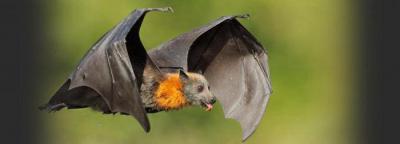

In the summer, she will begin to catch mosquitoes - this is the most interesting entertainment for her.
If you wish, you can feed the animal with homemade food: meat, milk or grain, but do not overdo it.

